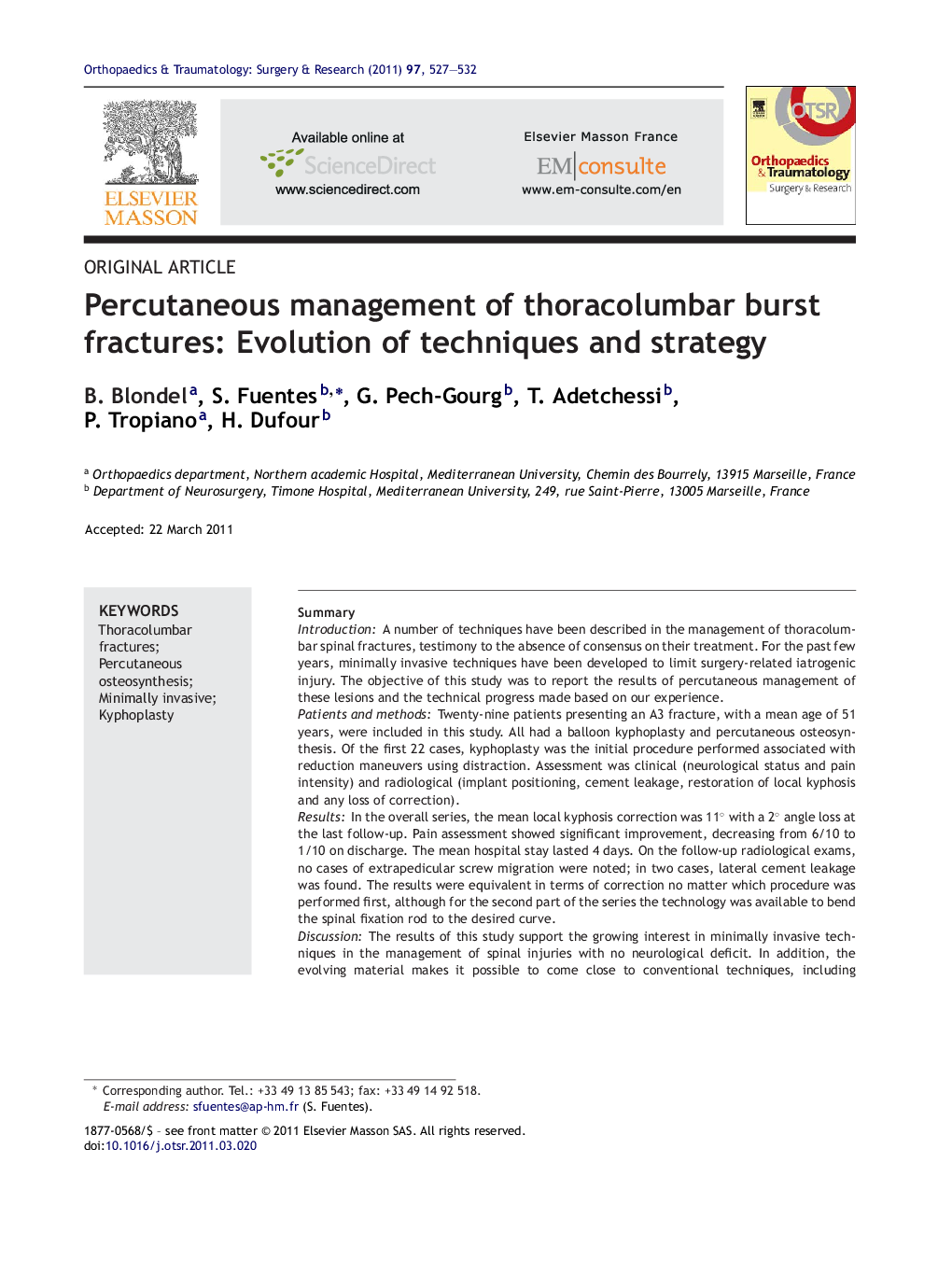| کد مقاله | کد نشریه | سال انتشار | مقاله انگلیسی | نسخه تمام متن |
|---|---|---|---|---|
| 4081974 | 1267617 | 2011 | 6 صفحه PDF | دانلود رایگان |

SummaryIntroductionA number of techniques have been described in the management of thoracolumbar spinal fractures, testimony to the absence of consensus on their treatment. For the past few years, minimally invasive techniques have been developed to limit surgery-related iatrogenic injury. The objective of this study was to report the results of percutaneous management of these lesions and the technical progress made based on our experience.Patients and methodsTwenty-nine patients presenting an A3 fracture, with a mean age of 51 years, were included in this study. All had a balloon kyphoplasty and percutaneous osteosynthesis. Of the first 22 cases, kyphoplasty was the initial procedure performed associated with reduction maneuvers using distraction. Assessment was clinical (neurological status and pain intensity) and radiological (implant positioning, cement leakage, restoration of local kyphosis and any loss of correction).ResultsIn the overall series, the mean local kyphosis correction was 11° with a 2° angle loss at the last follow-up. Pain assessment showed significant improvement, decreasing from 6/10 to 1/10 on discharge. The mean hospital stay lasted 4 days. On the follow-up radiological exams, no cases of extrapedicular screw migration were noted; in two cases, lateral cement leakage was found. The results were equivalent in terms of correction no matter which procedure was performed first, although for the second part of the series the technology was available to bend the spinal fixation rod to the desired curve.DiscussionThe results of this study support the growing interest in minimally invasive techniques in the management of spinal injuries with no neurological deficit. In addition, the evolving material makes it possible to come close to conventional techniques, including reduction maneuvers, while limiting muscle injury by using a purely percutaneous approach. Rigorous patient selection is necessary and the time to learn the procedure must be taken into account. Studies with a longer follow-up are required to confirm the stability of the correction over time.Level of evidenceLevel IV. Retrospective observational study.
Journal: Orthopaedics & Traumatology: Surgery & Research - Volume 97, Issue 5, September 2011, Pages 527–532